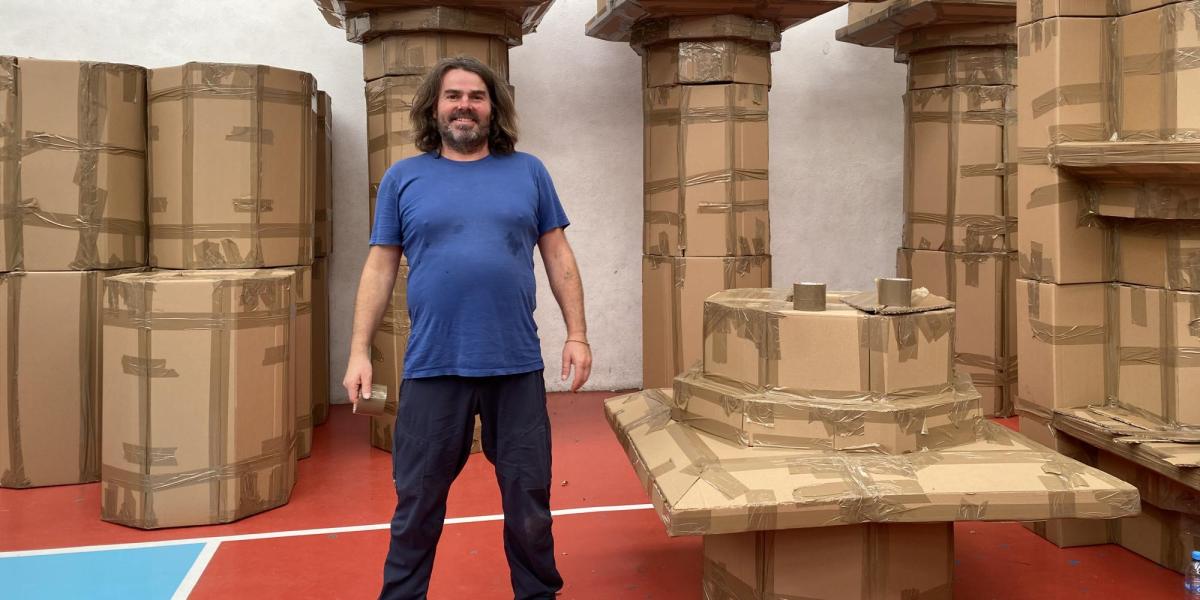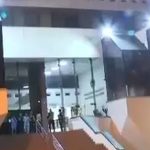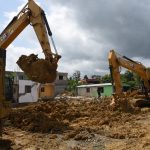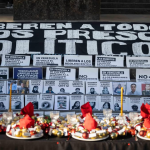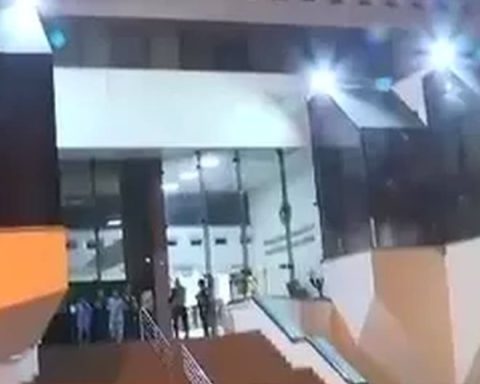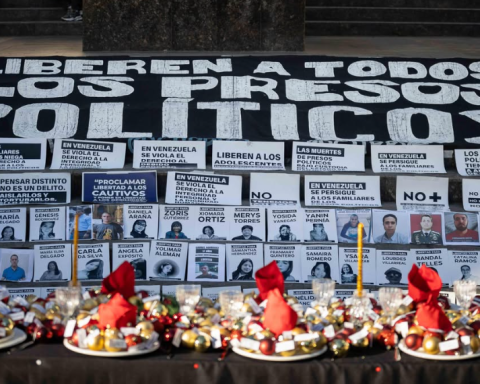It is the covered basketball court of the Juan José Torres Landa Sports Unit, just outside the center of the city of Guanajuato. This closed space has become a barracks, a place of conspiracy. The French artist Olivier Grossetête (Paris, 1973) set up his ephemeral construction workshop here to which all the people of the region are invited. The plan is to build a 12-meter-high reproduction of the Juárez Theater, but made with nothing more than sheets of cardboard assembled with cinnamon tape.
He wears a hybrid between brown leather huaraches and open shoes. This mission requires some comfort or freedom of movement to move around, build, carry and assemble large cardboard blocks, and lie down on the ground if necessary.
The graduate of the Ecole des Beaux-Artsin the French capital, rests on his knees to ensure that the pieces have the correct vertical alignment so that they fit together perfectly. After all, it is the base of one of the 12 Doric-type columns that will replicate those monumental ones that support the eclectic façade of the Juarez Theateremblem of this city.
Time is crucial. Everything has to be ready and adhered no later than Tuesday to, the next day, be transferred to the call officially as Hidalgo Squarebut popularly named Los Pastitos, an open area where people from the community are summoned to assemble this enormous but vulnerable structure.
Since 2000, Olivier Grossetête has dedicated himself to traveling the world, leading participatory monumental construction projects, adding more than 300 enormous buildings built—and then demolished—from a small gabled house with a chimney in the French Alps. in 2012, going through the meticulous reproduction of a cathedral in New Zealand in 2017 or the neoclassical towers of the Guadalajara Cathedral, in 2016, to enormous floating bridges suspended in the air in his native France during 2015.
“It is a packaging of architecture”
“The choice of the Juárez Theater is because it has many columns and this aspect makes it very interesting to reproduce. Right now, precisely what we are doing is creating a kind of base or mechanism so that the columns have stability, because if we just assemble them like this, the structure runs the risk of falling,” says Grossetête, with messy hair and a blue shirt, who agrees to take a break to attend to The Economist.
Everywhere, the artist has posted printed sheets with general plans in different colors according to the pieces that must be assembled and left ready and cataloged for later assembly.
Plans of the reproduction designed by Grossetête.
“We have planned this with Cervantine for about eight months. They offered me several properties and I decided on Juárez. It was what was most convenient because it is a very emblematic and cultural building. We have already had seven days of workshops with people from the community. During the week many school groups have come, but families also come. We have reached up to 40 people working in the workshop in a single day. “Right now there are a dozen of us because it is the weekend.”
The most important thing about this work is the process, he emphasizes, from the moment the cardboard sheets are cut out to build the blocks, through the partial assembly, then the general on-site assembly and, of course, the demolition. It is the gestation and consummation of an idea condemned to disappear, at least in the tangible form.
“What happens in the creation process is that the imaginary intersects with the real. Being an ephemeral construction, it makes the object itself challenge the conception of reality,” he says and agrees that architecture has an evident social power and its taxing capacity is such that it can condition people, for good and ill. evil.
“For example, the house of a governor or a monarch in any country is going to be very beautiful, while the house of an ordinary person in the community has to be less attractive. It is known, it is socially established that way. And this has a purpose. The same happens with the public buildings; For example, a court imposes or can make you feel guilty even if you do not have any guilt. So, by using cardboard, we are making a kind of packaging of architecture. Somehow, this notion, together with the public’s participation in the construction, allows architecture and power to be returned to the people.”
Demolishing a building is precisely that, the reconquest of public power in the hands of everyone. “We as a community, on the one hand, have the ability to dream and from that build new realities and, on the other, we are capable of removing or destroying everything that oppresses us,” says the artist who until a moment ago was kneeling on the ground like a little boy committed to building his Lego tower.
It is, in the end, a catharsis, “and it is also a way of desacralizing art, power and architecture itself. It’s like child’s play, like when we used to build something and then destroy it to create another shape on top of it. Ending things is so relevant because only that allows us to make way for the new. And in some way, that is a praise for life itself, because it is cyclical.”
It will be elevated and then brought down
Contextual art, collective performance, participatory monumental construction or ephemeral architecture. All of that could be this act to which all people who wish to participate on Wednesday, October 23, are invited to assemble this intentionally apocryphal monument of the Juárez Theater, about 12 meters high according to schematic forecasts, which will only take three days. Then, on Saturday, October 26, it will be demolished. And on its demolished ruins of cardboard and cinnamon tape, people will be able to jump and play.
Construction workshop.
Unlike stone and concrete architecture, the construction of this collaborative piece will begin at the top of the building, and will end precisely at the bases, so that the work will grow little by little with the crest in front.
As the building becomes taller, it will gain much more weight, and more people will be needed to carry the structure. There solutions must be improvised according to the requirements of the work.
(With the translation help of Francisca Muñoz Ledo)
